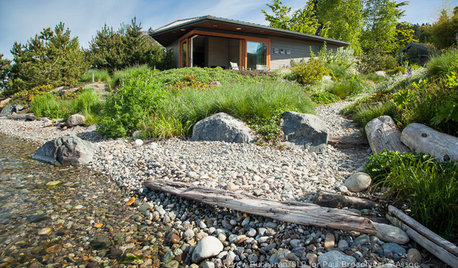Lawn and property disaster
coconutboogaloo
11 years ago
Related Stories

HOMES AROUND THE WORLDHouzz Tour: Warehouse Home Goes from Disaster to Triumph
A New Zealand family beats the odds 3 times when its loft apartment is threatened with demolition after a series of earthquakes
Full Story
BEFORE AND AFTERSSee 6 Yards Transformed by Losing Their Lawns
Wondering whether a turf lawn is the best use of your outdoor space? These homeowners did, and they found creative alternatives
Full Story
LANDSCAPE DESIGNGet Along With Less Lawn — Ideas to Save Water and Effort
Ditch the mower and lower your water bill while creating a feast for the eyes with diverse plantings and gathering places
Full Story
GREAT HOME PROJECTSHow to Replace Your Lawn With a Garden
New project for a new year: Lose the turfgrass for energy savings, wildlife friendliness and lower maintenance
Full Story
EXTERIORSWhere Front Yards Collide: Property Lines in Pictures
Some could be twins; others channel the Odd Couple. You may never look at property boundaries the same way again
Full Story
INSPIRING GARDENSInside Houzz: A Waterfront Property Ditches the Grass for a Garden
New drought-tolerant plantings and outdoor gathering spaces help this California backyard take in the view without wasting space or water
Full Story
INSPIRING GARDENSLawn Gives Way to a More Natural Lakeside Garden
Meadow grasses, beach pebbles and driftwood replace turfgrass in a nature-friendly landscape on Lake Washington’s shore
Full Story
EARTH DAYThe Case for Losing the Traditional Lawn
Work less, help the environment and foster connections by just saying no to typical turf
Full Story
GROUND COVERSGive Your Lawn a Taste of the Wild
Consider the joys of an irregularly trimmed meadow lawn: It’s ecofriendly, visually interesting and still good for romping
Full Story
FRONT YARD IDEASBefore and After: Front Lawn to Prairie Garden
How they did it: Homeowners create a plan, stick to it and keep the neighbors (and wildlife) in mind
Full StoryMore Discussions







grass1950
coconutboogalooOriginal Author
Related Professionals
Glendora Landscape Architects & Landscape Designers · Oatfield Landscape Architects & Landscape Designers · Otsego Landscape Architects & Landscape Designers · Port Royal Landscape Architects & Landscape Designers · Saint Matthews Landscape Architects & Landscape Designers · Winder Landscape Architects & Landscape Designers · Bound Brook Landscape Contractors · Goodlettsville Landscape Contractors · Kaysville Landscape Contractors · New Berlin Landscape Contractors · Webster Groves Landscape Contractors · Woodbury Landscape Contractors · Eastlake Landscape Contractors · Suisun City Landscape Contractors · West Covina Swimming Pool Buildersgrass1950
succeed
coconutboogalooOriginal Author
succeed
coconutboogalooOriginal Author
krnuttle
dchall_san_antonio
coconutboogalooOriginal Author